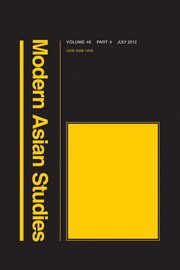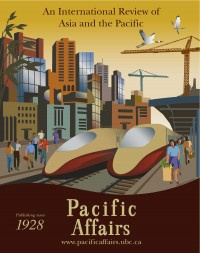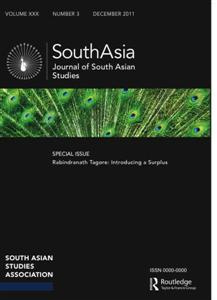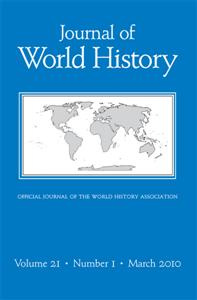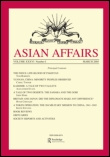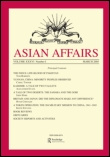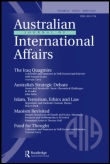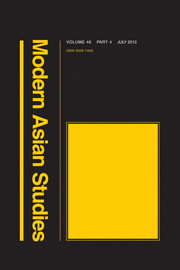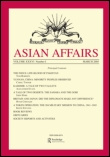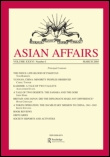Modem Asian Studies, 12, 2 (1978), pp. 307-330. Printed in Great Britain.
Another Yellow Peril: Chinese Migrants in the Russian Far East and the Russian Reaction before 1917
LEWIS H. SIEGELBAUM
La Trobe University
... five out of six people I met in the broad, windswept streets were Chinamennot fine, broad-faced men, as I have seen in the interior of China itself, but crowds of weak, withered-faced, slouching men, who slunk on one side when a Russian came along.1
The description provided by John Foster Fraser, a British journalist wandering through Siberia and Manchuria in the autumn of 1901, is of Khabarovsk, a town of some fifteen thousand people. Such scenes were not peculiar to Khabarovsk at the turn of the century, but could be witnessed in other towns throughout the Russian Far East such as Chita, Blagoveshchensk, Nikolsk-Ussuriiskii, and Vladivostok. Who were these weak, withered-faced Chinese that one was likely to encounter ? What were they doing within the boundaries of the Russian Empire ? What were the attitudes of the Russian population towards the Chinese and what policies did the provincial and central authorities adopt with respect to them ?
Accounts of Russian contacts with the Chinese in the late nineteenth and early twentieth centuries have traditionally concentrated on Russias penetration of Manchuria and the political and commercial concessions which the Tsarist government extracted from the Chinese authorities in Peking.2 On the other hand, studies dealing with eastern Siberia3 during this period have been concerned above all with Russian settlement and railroad construction.4 It is remarkable that both in
John Foster Fraser, The Real Siberia (London, 1902), p. 91.
2 The number of books on this subject is too long to list here. See the excellent if necessarily dated bibliography in A. Malozemoff, Russian Far Eastern Policy, 1881-1904 (Berkeley and Los Angeles, 1958), pp. 317-47; also Peter S. H. Tang, Russian and Soviet Policy in Manchuria and Outer Mongolia, ign-ig^i (Durham, North Carolina, 959)1 PP- 456-72;
3 Eastern Siberia refers to all land east of Lake Baikal, encompassing the Trans-baikal, Amur, and Maritime districts plus Sakhalin Island and Kamchatka. The Russian Far East is more restrictive, generally excluding the Transbaikal.
4 See Donald W. Treadgold, The Great Siberian Migration (Princeton, 1957); Harmon Tupper, To the Great Ocean: Siberia and the Trans-Siberian Railway (Boston,
the Soviet Union and the West, Chinese migration into the Russian Far East has received scant attention from historians. This neglect is all the more striking in view of the extent of Chinese migration and its influence on official policy in the Far East. The subject, then, is long overdue for discussion in the contexts of both social and political history and Russian-Chinese relations.
Although the Manchu dynasty had a long-standing policy of prohibiting Chinese settlement in the lands which it claimed as its patrimony, the edicts to this effect were difficult to enforce. Apart from convicts who cultivated government farms for the Manchu bannermen, Chinese settlers began to infiltrate into northern Manchuria in the late eighteenth and early nineteenth centuries. Some pushed even further to settle in the fertile Zeia plain northeast of the Amur River. These illegal migrants were largely peasants whose desire to escape from the cycle of land hunger and indebtedness apparently overcame fears of being caught or, what was more likely, perishing in the vast stretches of forested territory. In the 1850s, the years of the Tai-ping and other rebellions, migration northwards increased.
During the same period, between 1854 and 1858, Count Nikolai Muraviev, the governor-general of Eastern Siberia, made several audacious expeditions down the Amur. Encountering little opposition from the depleted Manchu garrisons and taking advantage of the desperate situation in which the Chinese government found itself, Muraviev persuaded the military governor of Heilungkiang to sign the Treaty of Aigun (16 May 1858).5 According to the treaty, the left (northern) bank of the Amur down to the Ussuri was ceded to Russia with the exception of 64 officially designated settlements which were to remain under Manchu jurisdiction. These provisions were confirmed by the Treaty of Peking (2 November i860) and extended to include the right (eastern) bank of the Ussuri.6
It was Muravievs ambition to establish a line of defence along the Amur as well as to transform the Amur valley into a food base for eastern Siberia that stimulated the first efforts to populate the area with Russian subjects.7 Even before the signing of the Treaty of Aigun, 1965); Akademiia nauk SSSR (ed.), lstoriia Sibiri (History of Siberia), 5 vols (Leningrad, 1968), III, 22-57, 207-11, 310-27 and passim.
5 All dates are given according to the Russian calendar which was twelve days behind the Gregorian Calendar in the nineteenth century and thirteen in the twentieth.
4 Texts of treaties appear in Vladimir (Z. Volpicelli), Russia on the Pacific and the Siberian Railroad (London, 1899), pp. 346-55.
7 See Muravievs reports in I. P. Barsuvko, Graf Nikolai Nikolaevich Amurskii, 2 vols (Moscow, 1891), II, 150-1, 186-8.
Cossacks from the Transbaikal region were brought out and settled along the Amur-Ussuri basin. In the early 1860s they were joined by peasantsmainly agricultural workers rather than farmersfrom South Russia. However, this initiative was not sustained and many of the original settlers perished in the wilderness or returned to their homelands.8 The departure of Muraviev in 1861, the sale of Russias North American possessions, the preoccupation of Russian foreign policy with the Balkans and Central Asia, and the diversion of much of the tea trade from Chinese ports through the Suez Canal temporarily eclipsed the development of Russias Pacific ports and official concern with the Far East. Without any financial encouragement, only the most adventuresome or desperate peasants undertook the long and arduous journey across the Urals and through western Siberia.
The tsarist governments interest in the Far East revived in the 1880s owing to several interrelated developments. Russian intervention in, and partial occupation of, Chinese Turkestan brought the Chinese and Russian empires to the verge of war in 1880-81. While the Treaty of St Petersburg (14 February 1881) resolved the dispute, relations remained strained. This, coupled with the opening of Korea to foreign trade, prospects for expanding trade with Manchuria, and the discovery of rich gold deposits in the Amur-Zeia valley, highlighted the strategic and economic importance of Russias Far Eastern territories. These developments also drew attention to the territories Oriental population which was predominantly Chinese.
Apart from the agricultural settlements in the Amur-Zeia which Muraviev had observed, the main concentration of Chinese on Russian territory was in the Ussuri region. There, along with Manchus and Koreans, the Chinese cultivated grain and vegetable crops (including opium poppy and the much-prized root of the herb, ginseng, both of which they exported), and carried on the retail trade for the entire settler and administrative population. The Chinese in both the Amur and Ussuri regions represented the furthest extension of the colonization of northern Manchuria which commenced on a large scale around 1880. Initially organized by the Chinese government for strategic purposeswith both Russia and Japan in mindthe movement of people northward from central China transformed itself into a vast
8 For a description of the tribulations of the Amur Cossacks in the early years of their settlement see the account of R. K. Bogdanov translated in Russias Eastward Expansion, ed. George A. Lensen (New York, 1964), pp. 96-103. Details of peasants difficulties and the flood of 1872 which inundated Cossack settlements are in P. Nadin, Piatidesiatiletie Amurskago Kraia, 1854-1904 gg. (Fifty Years of the Amur Region, 1854-1904), Vestnik Evropy, III (1905), 179, 181-4.
Next page
